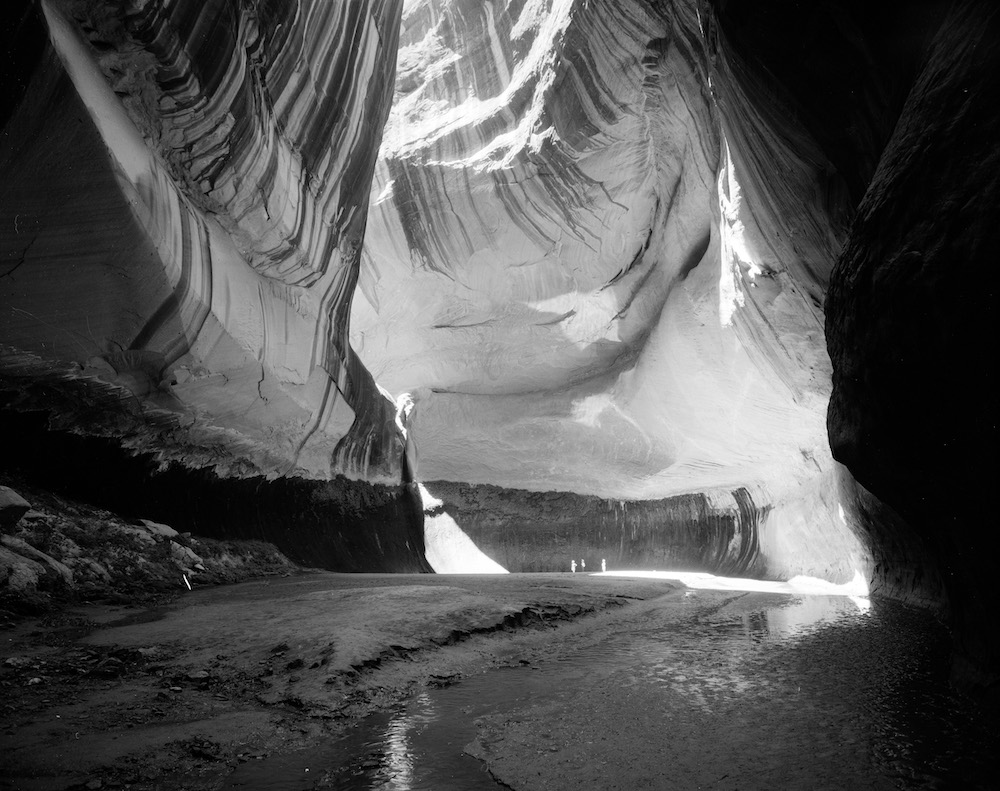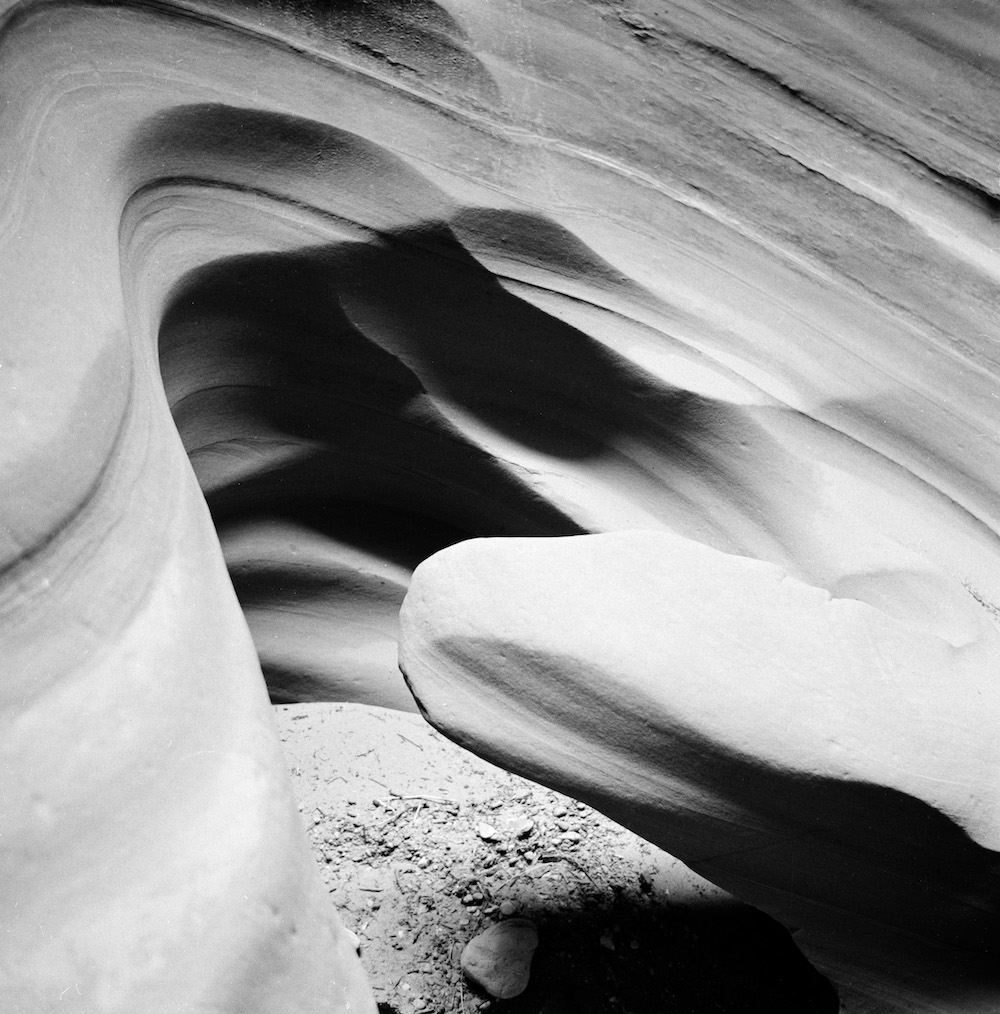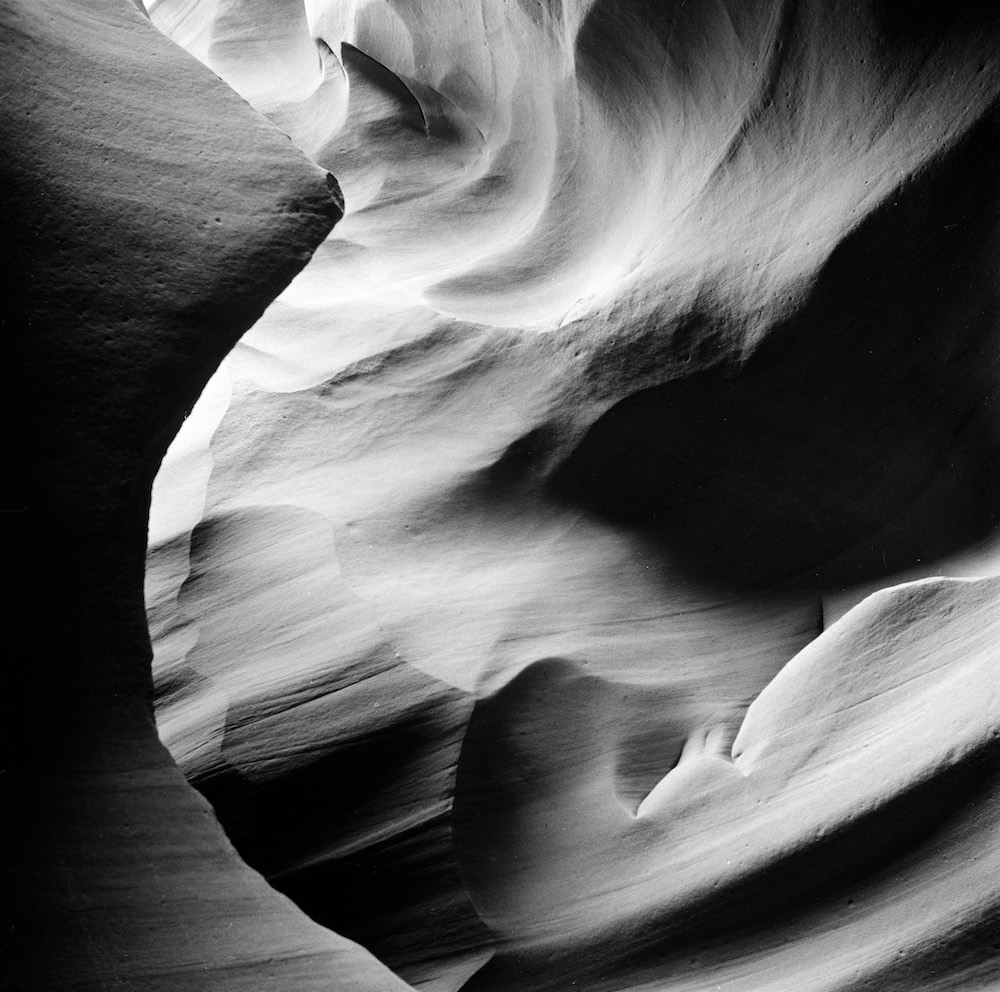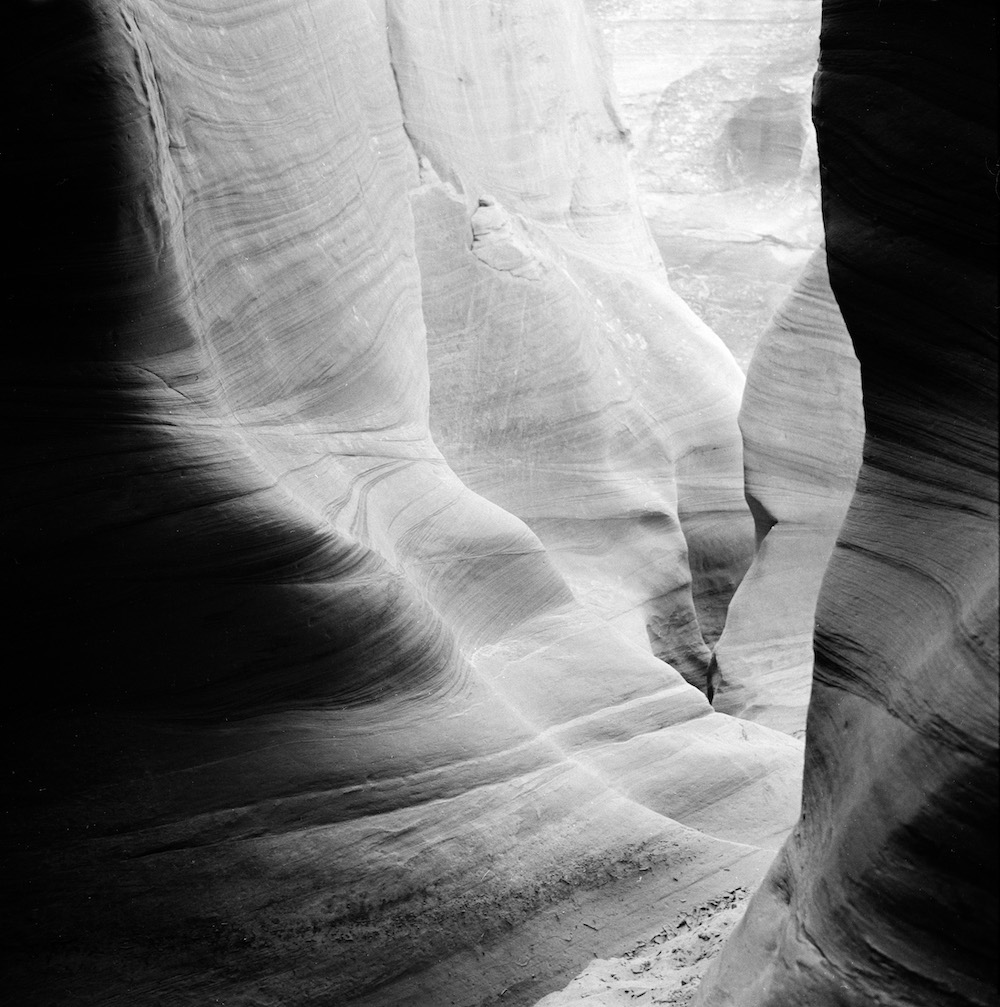
Artists at Glen Canyon and Lake Powell
May 2022 - November 2022

By Martin Stupich
Glen Canyon Dam, Arizona, view from downstream toward the dam, with canoeist and sandbar, 1992
Pigment print, 13 x 19″
This is the story of a place. It’s a place where millions of years of the earth’s development are openly revealed and where the hopes and aspirations of the human race have been inscribed for centuries. Located in canyon country along the Colorado River, Glen Canyon stretches down from southeastern Utah down northern Arizona, not far upriver from the more famous Grand Canyon. The canyon was carved into the rock of the Colorado Plateau by drops of water whose potential attracted the attention of the U.S. Bureau of Reclamation in the 1950s, when it was looking for a place to build a dam. Amidst much controversy, Glen Canyon Dam was completed in 1966 to generate hydroelectric power, thus submerging much of Glen Canyon under a reservoir called Lake Powell.
Using artifacts, photographs, paintings, writings, and archival material, the exhibition shares a long history of responses to Glen Canyon.
Among the artists whose work is included are Byron Wolfe and Mark Klett, Peter Goin, Greg Mac Gregor, Tad Nichols, Eliot Porter, Martin Stupich, Kathleen Velo, and Todd Webb. The exhibition articulates their individual responses to this special place while also touching on the shared experience of artists who traveled together and created collaborative projects, primarily books.
John Wesley Powell, who led expeditions through Glen Canyon in 1869 and 1871-72, wrote about his trip as a journey into “the great unknown.” Eliot Porter’s pivotal book The Place No One Knew: Glen Canyon on the Colorado, published in 1963 by the Sierra Club in protest of Glen Canyon Dam, is a central touchstone in the exhibition, itself inspiring and informing responses to Glen Canyon and Lake Powell. Floyd Dominy of the Bureau of Reclamation called the reservoir created by the dam “the Jewel of the Colorado,” while activist Edward Abbey proclaimed that “the collapse of Glen Canyon Dam is as inevitable as the rising of the moon, or the revival of spring, or the flow of the river home to the sea.”
Working from a variety of perspectives, the exhibition explores the canyon, the dam, and the lake while raising issues of sustainable living, cultural dominance, a sense of shared purpose, and the future of Glen Canyon.




